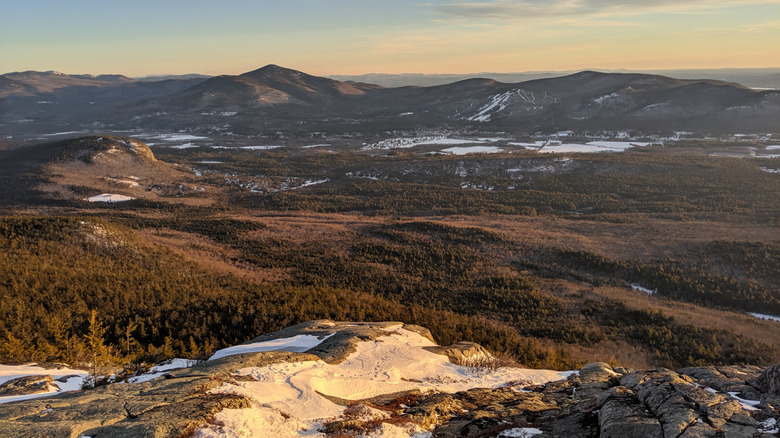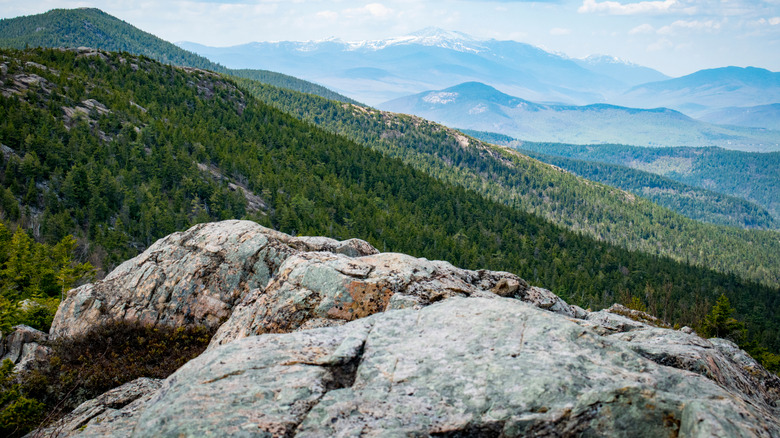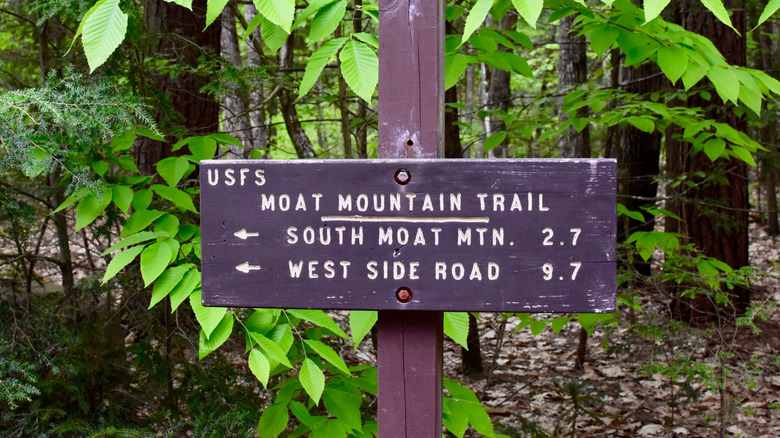A Free Mining Spot In New Hampshire's White Mountains Is Full Of Mesmerizing Dark Crystals And Forest Trails
Outdoor lovers will find a special charm in New Hampshire's White Mountains, one of the most relaxing and romantic mountain ranges in New England. Dispersed across the mountainsides and valleys are quiet towns like Carroll, with peak views, trails, and wild beauty. The scenery is breathtaking from afar, but the deeper you venture into the wilderness, the more hidden gems (literally) you'll find. There's a lesser-known place outside the town of Conway, New Hampshire, where you can take a short hike through the woods to reach the Moat Mountain Mineral Site, one of the few free, public access gem mining spots in the state.
Moat Mountain itself is a renowned landmark within the region for its three peaks and mineral treasures — as you drive through town, you'll notice shops and restaurants named after it, and multiple trailheads leading from the roads up the mountain. But turn onto a small, dirt strip from Passaconaway Road, driving deeper into the White Mountain National Forest, and you'll reach a trailhead that leads to the free mineral collecting site. The site is best known for its abundance of smoky quartz, which formed millions of years ago when the mountain was an active volcano. Take a hammer or chisel out to the collecting site, and there's a good chance you'll find some crystals buried in the granite to take home with you.
Ancient crystals at the Moat Mountain Mineral Site
Smoky quartz is named for its unique hue, which ranges from a soft tint to a dark gray or even blackish shade. It formed here at Moat Mountain about 200 million years ago when it was a volcano, and magma crystallized under the solidified lava flows as it cooled. Bubbles formed within the magma, called miarolitic cavities, as the crystals materialized.
At Moat Mountain's mining site, you'll see a basin of rock formations, where you can sort through loose, chipped rocks and break them apart with a hammer, pick, or chisel to unearth the gems. Much of the surface-level rocks have already been stripped of their crystals, so you'll need to dig a bit deeper to find the prizes. Keep a keen eye out for something shiny in the granite rock beds. A couple of things to look out for to help find where gems might be are small cavities in the rocks, where crystals are more likely to have formed, and quartz veins, which run through the rock and often lead to other gems. Though smoky quartz is the most abundant here, purple-hued amethyst, blocky microcline, and translucent blue topaz are also viable finds.
Tips for digging at and getting to the Moat Mountain Mineral Site
The Moat Mountain Mineral Site is located near Conway, considered one of America's best ski towns and home to a premier New Hampshire resort. You can get to the trailhead in about a 2.5-hour drive from Boston Logan International Airport or 1.5 hours from Maine's Portland International Jetport. The trailhead is located at the end of the dirt High Street road, where you'll see a parking area marked by a sign. There are bathrooms at the site but no drinking water, so it's a good idea to bring lots of fuel for a day of mining, plus some other useful equipment, including chisels, shovels, hammers, and bug spray. The digging site is open from mid-spring to autumn (in the colder months, the severe weather makes mining unfeasible).
The mineral site is free, but you need to get a permit. The permits are available at the trailhead — you just sign one and leave it in your car windshield. From the parking lot, a sign indicates where to follow the trail to get to the mineral site. It's about a 1-mile hike through the woods on a mostly easy trail with one steep section, crossing a riverbed to reach it. A couple of other trails connect with the Moat Mountain Mineral Site trail, including the short but challenging, Tent Boulder Trail, which has some rugged switchbacks and stream crossings.


